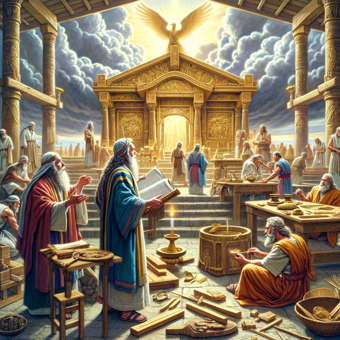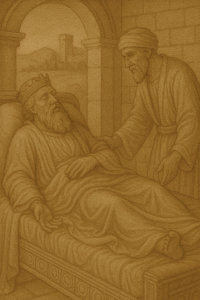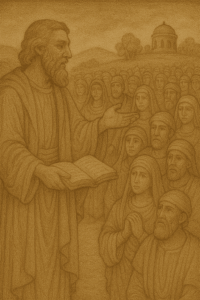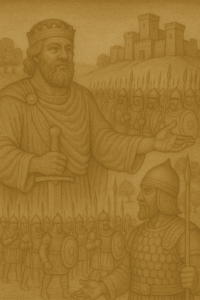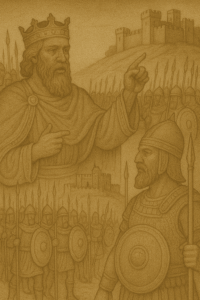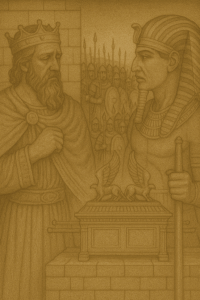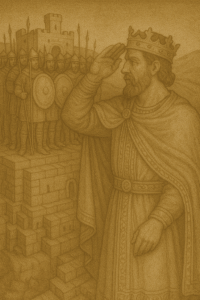A Sacred Space for God’s Presence.
In the heart of Exodus, chapter 25 unveils the blueprint for the Tabernacle, a portable sanctuary that would serve as the Israelites’ dwelling place for God’s presence during their wilderness journey. This divinely designed structure was to be a place of reverence, where God’s glory would reside amidst His chosen people.
Intricacy of Design and Craftsmanship
The Tabernacle’s construction was meticulously detailed, requiring skilled artisans to bring God’s vision to life. The structure was divided into two main sections: the Holy Place and the Most Holy Place, with the Ark of the Covenant resting at its heart.
The Ark of the Covenant: A Symbol of Divine Presence.
The Ark of the Covenant, a gold-covered wooden chest, held the Ten Commandments, symbolizing God’s law and authority. It was adorned with cherubim, winged figures that represented God’s power and protection.
The Table of Shewbread: A Daily Offering of Bread.
The Table of Shewbread, located in the Holy Place, held twelve loaves of bread that represented the daily offering of sustenance to God. This constant renewal served as a reminder of God’s provision and the Israelites’ dependence on Him.
The Lampstand: Illuminating the Presence of God.
The Lampstand, also in the Holy Place, consisted of seven branches that held seven lamps, symbolizing God’s illumination and guidance. It was to be kept burning perpetually, representing the constant presence of God among His people.
The Golden Altar: A Place of Sacrifice and Atonement.
The Golden Altar, located in the Holy Place, served as a place of sacrifice and atonement. The incense offered on this altar was believed to ascend to God, carrying with it prayers and petitions for forgiveness and cleansing.
The Tabernacle as a Symbol of God’s Dwelling.
The Tabernacle stood as a tangible representation of God’s dwelling among His people. It served as a place of worship, prayer, and sacrifice, fostering a deep connection between God and His chosen ones.
Applications in Modern Society.
The Tabernacle serves as a reminder of the importance of creating sacred spaces in our lives, where we can connect with God and experience His presence. Whether it’s a church, a home altar, or a quiet corner in nature, these spaces can serve as sanctuaries where we can seek God’s guidance, offer our prayers, and find solace and peace.
Conclusion.
Exodus 25’s detailed blueprint for the Tabernacle provides a glimpse into the Israelites’ reverence for God and their desire to create a sacred space to honor His presence. Its intricate design and symbolism continue to inspire and guide believers today, reminding us of the importance of cultivating spaces where we can connect with God and experience His transformative power.
